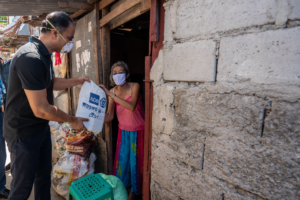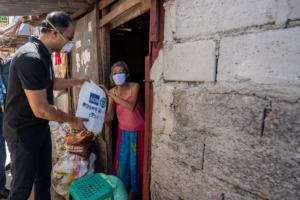4 Ways COVID-19 And Global Poverty Connect


Since early 2020, the entire globe has been battling the COVID-19 pandemic and attempting to address the outbreak properly. Most of the world’s population is currently under some form of social distancing as a part of a response to the outbreak. From scientific research to increased travel restrictions, almost every country is working on ways to boost the economy while managing the spread of the virus. However, COVID-19 has affected much more than the economy. Here are four ways COVID-19 and global poverty connect:
4 Ways COVID-19 and Global Poverty Connect
The Consumption of Goods and Services: For most developing countries struggling with poverty, much of their economies depend on commodities, such as exports. Food consumption represents the largest portion of household spending, and the increase in food prices and shortages of products affect low-income households. Countries that depend on imported food experience shortages. The increase in food prices could also affect the households’ inability to access other services such as healthcare, a major necessity during this time. These are two significant connections between COVID-19 and global poverty.
Employment and Income: The self-employed or those working for small businesses represent a large portion of the employed in developing countries. Some of these workers depend on imported materials, farming lands or agriculture. This requires harvest workers and access to local farmers’ markets to sell produce. Others work in the fields of tourism and retail. These fields require travelers, tourists and consumers — all of which lessen as COVID-19 restrictions increase. Without this labor income, many of these families (now unemployed) must rely on savings or government payments.
Weak Healthcare Systems: This pandemic poses a major threat to lower-middle-income developing countries. There is a strong correlation between healthcare and economic growth. The better and bigger the economy, the better the healthcare. Healthcare systems in developing countries tend to be weaker due to minimal resources including beds, ventilators, medicine and a below-average economy. Insurance is not always available for low-income families. All of this affects the quality of healthcare that those living within the poverty line receive. This is especially true during the COVID-19 pandemic.
Public Services: Low-income families and poor populations in developing countries depend on public services, such as school and public transportation. Some privatized urban schools, comprised of mainly higher-income families, are switching to online learning. However, many of the public rural schools receiving government funding do not have adequate resources to follow suit. This could increase the rate of drop out. Moreover, it will disproportionately affect poorer families since many consider education an essential incentive for escaping poverty. Aside from school, COVID-19 restrictions could prevent poorer families from accessing public transportation. For developing countries, public transportation could affect the ability of poorer families to access healthcare.
Moving Forward
There are many challenges that families across the globe face as a result of COVID-19. Notably, some organizations have stepped forward to help alleviate circumstances. The World Bank, Care International and the U.N. are among the organizations implementing programs and policies to directly target the four effects of COVID-19 mentioned above.
For example, the World Bank is continuously launching emergency support around the world to address the needs of various countries in response to COVID-19. By offering these financial packages, countries like Ethiopia, which should receive more than $82 million, can obtain essential medical equipment and support for establishing proper healthcare and treatment facilities. These financial packages constitute a total of $160 million over the next 15 months as a part of projects implemented in various countries, such as Mongolia, Kyrgyz Republic, Haiti, Yemen, Afghanistan and India.
– Nada Abuasi
Photo: Flickr
The post 4 Ways COVID-19 And Global Poverty Connect appeared first on The Borgen Project.
Original Source: borgenproject.org
Visited 715 Times, 1 Visit today
